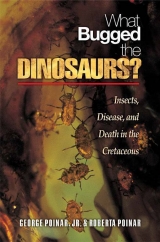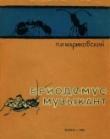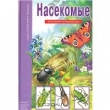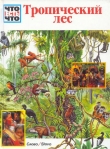
Текст книги "Кто кусал динозавров?"
Автор книги: Роберт Пойнар
Соавторы: мл. Джордж Пойнар
сообщить о нарушении
Текущая страница: 15 (всего у книги 17 страниц)
151. Czerkas, S. 1994. The history and interpretation of sauropod skin impressions. pp. 173–182 in Aspects of Sauropod Paleobiology, Lockley, M. G., dos Santos, V. F., Meyer, C. A. & Hunt, A. P. (eds.). Gaia 10: 1–279.152. Currie, P. J. 2000. Feathered dinosaurs. pp. 183–189 in The Scientific American Book of Dinosaurs, Paul, G. S. (ed.). St. Martin’s Griffin, New York.153. Markle, W. H. & Makhoul, K. 2004. Cutaneous leishmaniasis: Recognition and treatment. American Family Physician 69:1455–1460.154. Smith, H. R. 1946. Handbook of Lizards. Comstock Publishing, Ithaca, NY, 557 pp.155. Reid, R. E. H. 1997. Dinosaurian physiology: The case for “intermediate dinosaurs.” pp. 449–473 in The Complete Dinosaur, Farlow, J. D. & Brett-Surman, M. K. (eds.). Indiana University Press, Bloomington.156. Borkent, A. 2000. Biting midges (Ceratopogonidae: Diptera) from Lower Cretaceous Lebanese amber with a discussion of the diversity and patterns found in other ambers. pp. 355–451 in Studies on Fossils in Amber, with Particular Reference to the Cretaceous of New Jersey, Grimaldi, D. (ed.). Backhuys Publishers, Leiden.157. Mullen, G. R. 2002. Biting midges (Ceratopogonidae). pp. 163–183 in Medical and Veterinary Entomology, Mullen, G. and Durden, L. (eds.). Academic Press, San Diego, CA.158. Meiswinkel, R. 1992. Afrotropical Culicoides: C. (Avaritia) laxodontis sp. nov., a new member of the imicola group (Diptera: Ceratopogonidae) associated with the African elephant in the Kruger National Park, South Africa. Onderstepoort Journal of Veterinary Research 59: 145–160.159. Seppa, N. 2004. Soldiers in Iraq coming down with parasitic disease. Science News 166: 53.160. Mullens, B. A., Barrows, C. & Borkent, A. 1997. Lizard feeding by Leptoconops (Brachyconops) californiensis (Diptera: Ceratopogonidae) on desert sand dunes. Journal of Medical Entomology 34: 735–737.161. Auezova, G. 1998. The biting midges (Diptera: Ceratopogonidae)– bloodsuckers of reptiles and bats—as possible collaborators of arboviruses circulating in nature. Parasitology International 47 (Suppl.): 306.162. Wirth, W. W. & Hubert, A. A. 1962. The species of Culicoides related to piliferus Root and Hoffman in eastern North America (Diptera, Ceratopogonidae). Annals of the Entomological Society of America 55: 182–195.163. Borkent, A. 1995. Biting midges (Ceratopogonidae: Diptera) feeding on a leatherback turtle in Costa Rica. Brenesia 43–44: 25–30.164. Szadziewski, R. & Poinar, Jr., G. O. 2005. Additional biting midges (Diptera: Ceratopogonidae) from Burmese amber. Polska Pismo Entomologiczne 74: 349–362.165. Purse, B. V., Mellor, P. S., Rogers, D. J., Samuel, A. R., Mertens, P. P. C. & Baylis, M. 2005. Climate change and the recent emergence of bluetongue in Europe. Nature Reviews Microbiology 3: 171–181.166. Wirth, W. W. & Lee, D. J. 1958. Australasian Ceratopogonidae (Diptera: Nematocera). Part VIII: Anew genus from Western Australia attacking man. Proceedings of the Linnean Society of New South Wales 83: 337–339.167. Poinar, Jr., G. & Telford, Jr., S. R. 2005. Paleohaemoproteus burmacis gen. n., sp. n., (Haemospororida: Plasmodiidae) from an Early Cretaceous biting midge (Diptera: Ceratopogonidae). Parasitology 131: 1–6.168. Atkinson, C. T. & Van Riper III, C. 1991. Pathogenicity and epizootiology of avian Haematozoa: Plasmodium, Leucocytoozoon, and Haemoproteus. pp. 19–48 in Loye, J. E. & Zuk, M. (eds.). Bird-Parasite Interactions: Ecology, Evolution, and Behaviour. Oxford University Press, New York.169. Fallis, A. M. & Bennett, G. F. 1961. Ceratopogonidae as intermediated hosts for Haemoproteus and other parasites. Mosquito News 21: 21–28.170. Paperna, I. & Landau, I. 1991. Haemoproteus (Haemosporidia) of lizards. Bulletin du Museum National Histoire, Paris 13: 309–349.171. Doherty, R. L., Carley, J. G., Standfast, H. A., Dyce, A. L., Kay, B. H. & Snowdon, W. A. 1973. Isolation of arboviruses from mosquitoes, biting midges, sandflies and vertebrates collected in Queensland, 1969 and 1970. Transactions of the Royal Society of Tropical Medicine and Hygiene 67: 536–543.172. Poinar, Jr., G. O. & Poinar, R. 2005. Fossil evidence of insect pathogens. Journal of Invertebrate Pathology 89: 243–250.173. Anderson, R. C. 2000. Nematode Parasites of Vertebrates, 2nd ed. CABI Publishing, Wallingford, England, 650 pp.174. Azar, D., Nel, A., Solignac, M., Paicheler, J.-C. & Bouchet, F. 1999. New genera and species of psychodoid flies from the Lower Cretaceous amber of Lebanon. Palaeontology 42: 1101–1136.175. Rutledge, L. C. & Gupta, R. K. 2002. Moth flies and sand flies (Psychodidae). pp. 147–161 in Medical and Veterinary Entomology, Mullen, G. & Durden, L. (eds.). Academic Press, San Diego, CA.176. Chaniotis, B. N. 1967. The biology of California Phlebotomus (Diptera: Psychodidae) under laboratory conditions. Journal of Medical Entomology 4: 221–233.177. Klein, T. A., Young, D. G., Telford, Jr., S. R. & Kimsey, R. 1987. Experimental transmission of Plasmodium mexicanum by bites of infected Lutzomyia vexator (Diptera: Psychodidae). Journal of the American Mosquito Control Association 3: 154–164.178. Da Silva, O. S. & Grunewald, J. 2000. First detection of blood in the gut of wild caught male sandflies in southern Brazil. Studies on Neotropical Fauna and Environment 35: 201–202.179. Perfilev, P. P. 1968. Phlebotomidae (sandflies). In Fauna of U.S.S.R. (Diptera), Vol. 33, No. 2, Akademiya Nauk SSSR, Moscow. (Translated from Russian by the Israel program for scientific translations, Jerusalem.) 363 pp.180. Boucot, A. J., Chen, Xu & Scotese, C. R. 2008. Preliminary compilation of Cambrian through Miocene climatically sensitive deposits. Memoirs of the Society of Economic Paleontologists and Mineralogists, Norman, OK (in press).181. Poinar, Jr., G. O., Jacobson, R. L. & Eisenberger, C. L. 2006. Early Cretaceous phlebotomine sand fly larvae (Diptera: Psychodidae). Proceedings of the Entomological Society of Washington 108: 785–792.182. Thomson, L. A. J. 2006. Agathis macrophylla (Pacific kauri). pp. 29–40 in Traditional Trees of Pacific Islands, Elevitch, C. R. (ed.). Holualoa, Hawaii.
183. Telford, Jr., S. R. 1995. The kinetoplastid hemoflagellates of reptiles. pp. 161–223 in Parasitic Protozoa, 2nd ed., Kreier, J. P. (ed.). Vol. 10. Academic Press, San Diego.184. Brygoo, E. R. 1963. Hematozoaires de Reptiles malgaches. 1. Trypanosoma therezieni n. sp. parasite des chameleons de Madagascar. Infestation naturelle et experimentale. Archives de Institute de Pasteur Madagascar 31: 133–141.185. Dedet, J.-P. 2002. Current status of epidemiology of leishmaniases. pp. 1–10 in Leishmania, Farrell, J. P.(ed.). Kluver Academic Publishers, Dordrecht.186. Montoya-Lerma, J., Cadena, H., Oviedo, M., Ready, P. D., Barazarte, R., Travi, B. L. & Lane, R. P. 2002. Comparative vectorial efficiency of Lutzomyia evansi and Lu. longipalpis for transmitting Leishmanial chagasi. Acta Tropica 85: 19–29.187. Yuval, B. 1991. Populations of Phlebotomus papatasi (Diptera: Psychodidae) and the risk of Leishmanial major transmission in three Jordan Valley habitats. Journal of Medical Entomology 28: 492–495.188. Schlein, Y. Warburg, A., Schnur, L. F. & Gunders, A. E. 1982. Leishmaniasis in the Jordan Valley II. Sandflies and transmission in the central endemic area. Transactions of the Royal Society of Tropical Medicine and Hygiene 76: 582–589.189. Ayala, S. C. 1970. Lizard malaria in California; description of a strain of Plasmodium mexicanum, and biogeography of lizard malaria in Western North America. The Journal of Parasitology 56: 417–425.190. Poinar, Jr., G. O. & Poinar, R. 1999. The Amber Forest, Princeton University Press, Princeton, NJ, 239 pp.191. Poinar, Jr., G. O., Zavortink, T. J., Pike, T. & Johnston, P. A. 2000. Paleoculicis minutus (Diptera: Culicidae) n. gen., n. sp., from Cretaceous Canadian amber, with a summary of described fossil mosquitoes. Acta Geologica Hispanica 35: 119–128.192. Day, J. F. & Curtis, G. A. 1983. Opportunistic blood-feeding on egg-laying sea turtles by salt marsh mosquitoes (Diptera: Culicidae). Florida Entomologist 66: 359–360.193. Fretey, J. 1989. Attaques diurnes ou nocturnes de Tortues luths par des Tabanidés et autres Diptères hématophages en Guyane francaise et au Surinam. L’Entomologiste 45: 237–244.
194. Foster, W. A. & Walker, E. D. 2002. Mosquitoes (Culicidae).pp. 203–262 in Medical and Veterinary Entomology, Mullen, G. & Durden, L. (ed.). Academic Press, San Diego, CA.195. Horsefall, W. R. 1955. Mosquitoes, Their Bionomics and Relation to Disease. The Ronald Press, New York, 723 pp.196. Klein, T. A., Young, D. G. & Telford, Jr., S. R. 1987. Vector incrimination and experimental transmission of Plasmodium floridense by bites of infected Culex (Melanoconion) erraticus. Journal of the American Mosquito Control Association 3: 165–175.197. Jordan, H. B. 1964. Lizard malaria in Georgia. Journal of Protozoology 11: 562–566.198. Telford, S. R. 1994. Plasmodia of Reptiles. pp. 1–71 in Parasitic Protozoa, 2nd ed., Kreier, J. P. (ed.). Vol. 7. Academic Press, San Diego.199. Perkins, S. L. 2001. Phylogeography of Caribbean lizard malaria: Tracing the history of vector-borne parasites. Journal of Evolutionary Biology 14: 34–45.200. Klein, T. A., Akin, D. C., Young, D. G. & Telford, Jr., S. R.1988. Sporogony, development and ultrastructure of Plasmodium floridense in Culex erraticus. International Journal for Parasitology 18: 711–719.201. Marra, P. P., Griffing, S., Caffrey, A., Kilpatrick, A. M., McLean, R., Brand, C., Saito, E., Dupris, A. P., Kramer, L. & Novak, R. 2004. West Nile virus and wildlife. BioScience 54: 393–402.202. Miller, D., Manual, M., Baldwin, C., Burtle, C., Ingram, G., Hines, M. & Frazier, K. 2003. West Nile virus in farmed alligators. Emerging Infectious Diseases 9: 641–646.203. Frank, W. 1981. Endoparasites. pp. 291–358 in Diseases of the Reptilia, vol. 1, Cooper, J. E. & Jackson, O. F. (eds.). Academic Press, London.204. Adler, P. H. & McCreadie, J. W. 2002. Black flies (Simuliidae). pp. 185–202 in Medical and Veterinary Entomology, Mullen, G. & Durden, L. (eds.). Academic Press, San Diego, CA.205. Crosskey, R. W. 1990. The Natural History of Blackflies. John Wiley and Sons, New York, 711 pp.206. Jell, P. A & Duncan, P. M. 1986. Invertebrates, mainly insects, from the freshwater, Lower Cretaceous, Koonwarra fossil bed (Korumburra Group), South Gippsland, Victoria. pp. 111–205 in Plants and Invertebrates from the Lower Cretaceous Koonwarra Fossil Bed, South Gippsland, Victoria, Jell, P. A& Roberts, J. (eds.). Association of Australasian Palaeontologists, Sydney.207. Kalugina. N. S. 1991. New Mesozoic Simuliidae and Leptocononopidae and the origin of bloodsucking in the lower Dipteran insects. Paleontological Journal 1: 69–80.208. Currie, D. C. & Grimaldi, D. 2000. A new black fly (Diptera: Simuliidae) genus from mid Cretaceous (Turonian) amber of New Jersey. pp. 473–485 in Studies on Fossils in Amber, with Particular Reference to the Cretaceous of New Jersey, Grimaldi, D. (ed.). Backhuys Publishers, Leiden.209. Smith, C. D. 1969. The effects of temperature on certain life stages of Simuliidae (Diptera). M.S. thesis. University of Durham, 122 pp.210. Martins-Neto, R. G. & Kucera-Santos, J. C. 1994. Um nôvo gênero e nôva espécie de mutuca (Insecta, Diptera, Tabanidae) da Formação Santana (Cretáceo Inferior), Bacia do Araripe, Nordeste do Brasil. Acta Geologica Leopoldensia 17: 289–297.211. Coram, R., Jarzembowski, E. A. & Ross, A. J. 1995. New record of Purbeck fossil insects. Proceedings of the Dorset Natural Historical and Archaeological Society 116: 145–150.212. Ren, D. 1998. Late Jurassic Brachycera from Northeastern China (Insects: Diptera). Acta Zootaxonomica Sinica 23: 65–83.213. Mostovski, M. B., Jarzembowski, E. A. & Coram, R. A. 2003. Tabanids and athericids (Diptera: Tabanidae, Athericidae) from the Lower Cretaceous of England and Transbaikalia. Paleontological Zhurnal 2: 57–64.214. Ferreira, R. L. M., Henriques, A. L. & Rafael, J. A. 2002. Activity of tabanids (Insects: Diptera: Tabanidae) attacking the reptiles Caiman crocodilus (Linn.) (Alligatoridae) and Eunectes murinus (Linn.) (Boidae), in the Central Amazon, Brazil. Memórias do Instituto Oswaldo Cruz 97:133–136.215. Philip, C. B. 1983. A unique, divergent developmental dependence of a Galapagos tabanid (Diptera, Tabanidae). Wasmann Journal of Biology 41: 47–49.216. Fretey, J. 1989. Attaques diurnes ou nocturnes de Tortues luths par des Tabanidés et autres Diptères hématophages en Guyane francaise et au Surinam. L’Entomologiste 45: 237–244.217. Sterling, C. R. & de Guisti, D. L. 1974. Fine structure of differentiating oocysts and mature sporozoites of Haemoproteus metchnikovi in its intermediate host Chrysops callidus. Journal of Protozoology 21: 276–283.218. Mullens, B. A. 2002. Horse flies and deer flies (Tabanidae). pp. 263–277 in Medical and Veterinary Entomology, Mullen, G. & Durden, L. (eds.). Academic Press, San Diego, CA.219. Fox, I., Fox, R. I. & Bayona, I. G. 1966. Fleas feed on lizards in the laboratory in Puerto Rico. Journal of Medical Entomology 2: 395–396.220. Durden, L. A. & Traub, R. 2002. Fleas (Siphonaptera). pp. 103–125 in Medical and Veterinary Entomology, Mullen, G. & Durden, L. (eds.). Academic Press, San Diego, CA.221. Ponomarenko, A. G. 1976. A new insect from the Cretaceous of Transbaikalia, a possible parasite of pterosaurians. Paleontological Journal 3: 339–343.222. Ponomarenko, A. G. 1986. Insects in the early Cretaceous ecosystems of the West Mongolia. Transactions of the Joint Soviet-Mongolian Palaeontological Expedition 28: 1–214.223. Durden, L. A. 2002. Lice (Phthiraptera). pp. 45–65 in Medical and Veterinary Entomology, Mullen, G. & Durden, L. (eds.). Academic Press, San Diego, CA.224. Rasnitsyn, A. P. & Zherikhin, V. V. 1999. First fossil chewing louse from the Lower Cretaceous of Baissa, Transbaikalia (Insects, Pediculida = Phthiriaptera, Saurodectidae fam. n.). Russian Entomology Journal 8: 253–255.225. Derylo, A. 1970. Mallophaga as a reservoir of Pasteurella multocida. Acta Parasitologica Polonica 17: 301–313.226. Klompen, J. S. & Grimaldi, D. 2001. First Mesozoic record of a parasitiform mite: A larval argasid tick in Cretaceous amber (Acari: Ixodida: Argasidae). Annals of the Entomological Society of America 94: 10–15.227. Keirans, J. E. & Gattis, G. I. 1986. Amblyomma arianae, n. sp. (Acari: Ixodidae), a parasite of Alsophis portoricensis (Reptilia: Colubridae) in Puerto Rico. Journal of Medical Entomology 23: 622–625.228. Frey, F. L. 1991. Reptile Care. An Atlas of Diseases and Treatments, Vol. 1. T. F. H. Publications, Neptune City, NJ, 341 pp.229. Arthur, D. R. 1961. Ticks and Disease. Row, Peterson & Co., Evanston, IL, 445 pp.230. Sonenshine, D. E., Lane, R. S. & Nicholson, W. L. 2002. Ticks (Ixodida). pp. 517–558 in Medical and Veterinary Entomology, Mullen, G., & Durden, L. (eds.). Academic Press, San Diego, CA.231. de la Fuente, J. 2003. The fossil record and the origin of ticks (Acari: Parasitiformes: Ixodida). Experimental and Applied Acarology 29: 331–344.232. Parola. P & Raoult, D. 2001. Tick-borne bacterial diseases emerging in Europe. Clinical and Microbiological Infections 7: 80–83.233. Lane, R. S. & Quistad, G. B. 1998. Borrelicidal factor in the blood of the western fence lizard (Sceloporus occidentalis). Journal of Parasitology 84: 29–34.234. Cooper, J. E. 1981. Bacteria. pp. 165–191 in Diseases of the Reptilia, Vol. 1, Cooper, J. E. & Jackson, O. F. (eds.). Academic Press, New York.235. Hoff, G. L. 1984. Q fever. pp. 101–106 in Diseases of Amphibians and Reptiles, Hoff, G. L., Frye, F. L. & Jacobson, E. R. (eds.). Plenum Press, New York.236. Mullen, G. R. & O’Conner, B. M. 2002. Mites (Acari). pp. 449–516 in Medical and Veterinary Entomology. Mullen, G. & Durden, L. (eds.). Academic Press, San Diego, CA.237. Lawrence, R. F. 1935. The prostigmatic mites of South African lizards. Parasitology 27: 1–45.238. Lawrence, R. F. 1936. The prostigmatic mites of South African lizards. Parasitology 28: 1–39.239. Goodwin, Jr., M. H. 1954. Observations on the biology of the lizard mite Geckobiella texana (Banks) 1904 (Acarina: Pterygosomidae). Parasitology 40: 54–59.240. Davidson, J. A. 1958. Anew species of lizard mite and a generic key to the family Pterygosomidae. Proceedings of the Entomological Society of Washington 60: 75–79.241. Lawrence, R. F. 1949. The larval Trombiculid mites of South African vertebrates. Annals of the Natal Museum 11: 405–486.242. Moravec, F. 2001. Trichinelloid Nematodes Parasitic in Cold-Blooded Vertebrates. Academia, Prague, 429 pp.243. Yamaguti, S. 1961. Systema Helmithum, Vol.3, Parts 1 and 2 of The Nematodes of Vertebrates. Interscience Publishers, New York, 1,261 pp.244. Fincher, G. T., Stewart, T. B. & Davis, R. 1969. Beetle intermediate hosts for swine spirurids in southern Georgia. Journal of Parasitology 55: 355–358.245. Poinar, G. O. & Vaucher, C. 1972. Cycle larvaire de Physaloptera retusa Rudolphi, 1819 (Nematoda, Physalopteridae), parasite d’un Lézard sud-amèricain. Bulletin du Musèum National d’Histoire Naturelle 74: 1321–1327.246. Goldberg, S. R., Bursey, C. R. & Morando, M. 2004. Metazoan endoparasites of 12 species of lizards from Argentina. Comparative Parasitology 71: 208–214.247. Sprent, J. F. A. 1978. Ascaridoid nematodes of amphibians and reptiles: Polydelphis, Travassosascaris n.g. and Hexametra. Journal of Helminthology 52: 355–384.248. Sprent, J. F. A. 1984. Ascaridoid nematodes. pp. 219–245 in Diseases of Amphibians and Reptiles, Hoff, G. L., Frye, F. L. & Jacobson, E. R. (eds.). Plenum Press, New York.249. Poinar, Jr., G. O., Chabaud, A. G. & Bain, O. 1989. Rabbium paradoxus sp. n. (Seuratidae: Skrjabinelaziinae) maturing in Camponotus castaneus (Hymenoptera: Formicidae). Proceedings of the Helminthological Society of Washington 56: 120–124.250. Brooks, D. R. 1984. Platyhelminths. pp. 247–258 in Diseases of Amphibians and Reptiles, Hoff, G. L., Frye, F. L. & Jacobson, E. R. (eds.). Plenum Press, New York.251. Conn, D. B. 1985. Life cycle and postembryonic development of Oochoristica anolis (Cyclophyllidea: Linstowiidae). Journal of Parasitology 71: 10–16.252. Poinar, Jr., G. O. & Hess, R. 1982. Ultrastructure of 40-millionyear-old insect tissue. Science 215: 1241–1242.253. Poinar, Jr., G. O. & Hess, R. 1985. Preservative qualities of recent and fossil resins: Electron micrograph studies on tissues preserved in Baltic amber. Journal of Baltic Studies 16: 222–230.254. Poinar, Jr., G. O. & Poinar, R. 2004. Paleoleishmania proterus n. gen., n. sp., (Trypanosomatidae: Kinetoplastida) from Cretaceous Burmese amber. Protista 155: 305–310.255. Poinar, Jr., G. O. 2004. Palaeomyia burmitis gen. n., sp. n. (Phlebotomidae: Diptera), a new genus of Cretaceous sand flies with evidence of blood sucking habits. Proceedings of the Entomological Society of Washington 106: 598–605.256. Altman, P. L. 1961. Blood and Other Body Fluids. Federation of American Societies for Experimental Biology, Washington, D.C., 540 pp.257. Baker, J. R. 1976. Biology of the trypanosomes of birds. pp. 131–174 in Biology of the Kinetoplastida, Vol. 1, Lumsden, W. H. R. & Evans, D. A. (eds.). Academic Press, New York.258. Wilson, V. C. L. & Southgate, B. A. 1979. Lizard Leishmania. pp. 241–268 in Biology of the Kinetoplastida, Vol. 2, Lumsden W. H. R. & Evans D. A. (eds.). Academic Press, New York.259. Telford, Jr., S. R. 1984. Haemoparasites of Reptiles. pp. 385–517 in Diseases of Amphibians and Reptiles, Hoff, G. L., Frye, F. L. & Jacobson, E. R. (eds.). Plenum Press, New York.260. Poinar, Jr., G. O. & Poinar, R. 2004. Evidence of vector-borne disease of Early Cretaceous reptiles. Vector-Borne and Zoonotic Diseases 4: 281–284.261. Poinar, Jr., G. & Telford, Jr., S. R. 2005. Paleohaemoproteus burmacis gen. n., sp. n., (Haemospororida: Plasmodiidae) from an Early Cretaceous biting midge (Diptera: Ceratopogonidae). Parasitology 131: 1–6.262. Anderson, B., Friedman, H. & Bendinelli, M. 2006. Microorganisms and Bioterrorism. Springer, New York, 240 pp.263. Soto, C. 2006. Prions, the New Biology of Proteins. CRC Press, Boca Raton, FL, 167 pp.264. Villarreal, L. P. 2005. Viruses and the Evolution of Life. ASM Press, Washington, D.C., 395 pp.265. Reisen, W. K. 2002. Epidemiology of vector-borne diseases. pp. 15–27 in Medical and Veterinary Entomology, Mullen, G. & Durden, L. (eds.). Academic Press, San Diego, CA.266. Thompson, P. E. 1944. Changes associated with acquired immunity during initial infections in saurian malaria. Journal of Infectious Diseases 75: 138–149.267. Tkach, J. R. 1983. Evolutionary immaturity of B-cell function as a possible cause of the Upper Cretaceous extinction of orders Saurischia and Ornithischia. Unpublished document, 24 pp.268. Moodie, R. L. 1923. Paleopathology:An Introduction to the Study of Ancient Evidences of Disease. University of Illinois Press, Urbana, 567 pp.269. Schweitzer, M. H., Wittmeyer, J. L., Horner, J. R. & Toporski, J. K. 2005. Soft-tissue vessels and cellular preservation in Tyrannosaurus rex. Science 307: 1952–1955.
270. Clausen, H. J. & Duran-Reynals, F. 1937. Studies in the experimental infection of some reptiles, amphibia and fish with Serratia anolium. American Journal of Pathology 13 : 441–451.271. Poinar, Jr., G. O. & Thomas, G. M. 1984. Laboratory Guide to Insect Pathogens and Parasites. Plenum Press, New York, 392 pp.272. Fauquat, C. M. & Fargette, D. 2005. International Committee on taxonomy of viruses and the 3,142 unassigned species. Virology Journal 2: 64–74.273. Taylor, T. N. & Taylor, E. L. 1993. The Biology and Evolution of Fossil Plants. Prentice Hall, Englewood Cliffs, NJ, 982 pp.274. Rossman, A. Y., Farr, D. F., Bills, G. F. & Chamuris, G. P. 1989. Fungi on Plants and Plant Products in the United States. The American Phytopathological Society, St. Paul, MN, 1,252 pp.275. Migaki, G., Jacobson, E. R. & Casey, H. W. 1984. Fungal diseases in reptiles. pp. 183–204 in Diseases of Amphibians and Reptiles, Hoff, G. L., Frye, F. L. & Jacobson, E. R. (eds.). Plenum Press, New York.276. Kisla, T. A., Cu-Unjieng, A., Singler, L., & Sugar, J. 2000. Medical management of Beauveria bassiana keratitis. Cornea 19: 405–406.277. Maggenti, A. 1981. General Nematology. Springer-Verlag, New York, 372 pp.278. Poinar, Jr., G. O. 1975. Entomogenous Nematodes. Brill, Leiden, 317 pp.279. Poinar, Jr. G. O. 1983. The Natural History of Nematodes. Prentice Hall, Englewood Cliffs, NJ, 323 pp.280. Garnham, P. C. C. 1966. Malaria Parasites and Other Haemosporidia. Blackwell Scientific Publications, Oxford, 1,114 pp.281. Perkins, F. O., Barta, J. R., Clopton, R. E., Pierce, M. A. & Upton, S. J. 2000. Phylum Apicomplexa Levine, 1970. pp. 190–369 in An Illustrated Guide to the Protozoa, 2nd ed., Vol. 1, Lee, J. J., Leedale, G. F. & Bradbury, P. (eds.). Society of Protozoologists, Lawrence, KS.282. Telford, S. R. 1994. Plasmodia of reptiles. pp. 1–71 in Parasitic Protozoa, 2nd ed., Vol. 7, Kreier, J. P. (ed.). Academic Press, San Diego.283. Poinar, Jr., G. O. 2005. Plasmodium dominicana n. sp. (Plasmodiidae: Haemospororida) from Tertiary Dominican amber. Systematic Parasitology 61: 47–52.
284. Baker, J. R. 1965. The evolution of parasitic protozoa. pp. 1–27 in Evolution of Parasites, Taylor, A. E. R. (ed.). Blackwell Scientific Publications, Oxford.285. Hughes, A. L. & Piontkivska, H. 2003. Phylogeny of Trypanosomatidae and Bodonidae (Kinetoplastida) based on 18S rRNA: Evidence for paraphyly of Trypanosoma and six other genera. Molecular Biology and Evolution 20: 644–652.286. Simpson, A. G. B., Stevens, J. R. & Lukes, J. 2006. The evolution and diversity of kinetoplastid flagellates. Trends in Parasitology 22: 168–174.287. Schlein, Y. & Jacobson, R. L. 1998. Cellulase enzymes and the evolution of trypanosomatids. pp. 117–134 in Digging for Pathogens, Greenblatt, C. L. (ed.). Balaban Publications, Rehovot, Israel.288. Lom, J. 1979. Biology of the trypanosomes and trypanoplasms of fish. pp. 269–337 in Biology of the Kinetoplastida, Vol. 2, Lumsden, W. H. R. & Evans, D. A. (eds.).Academic Press, London.289. Lillegraven, J. A., Kraus, M. J. & Brown, T. M. 1979. Paleogeography of the world of the Mesozoic. pp. 277–308 in Mesozoic Mammals, Lillegraven, J. A., Kielan-Jaworowska, Z. & Clemens, W. A. (eds.). University of California Press, Berkeley.290. Donnelly, T. W. 1992. Geological setting and tectonic history of Mesoamerica. pp.1–13 in Insects of Panama and Mesoamerica, Quintero, D. & Aiello, A. (eds.).Oxford University Press, New York.291. Glick, P. A. 1939. The distribution of insects, spiders, and mites in the air. United States Department of Agriculture Technical Bulletin 673: 1–150.292. Borror, D. J., Triplehorn, C. A. & Johnson, N. F. 1989. An Introduction to the Study of Insects, 6th ed. Saunders College Publishing, Philadelphia, 875 pp.293. Swan, L. 1964. Beneficial Insects. Harper Row, New York, 429 pp.294. Mikhailov, K. E. 1997. Eggs, eggshells, and nests. pp. 205–209 in Encyclopedia of Dinosaurs, Currie, P. T. & Padian, K. (eds.). Academic Press, San Diego.295. Upchurch, P., Barrett, P. M. & Dodson, P. 2004. Sauropoda. pp. 259–322 in The Dinosauria, 2nd ed., Weishampel, D. B., Dodson, P. & Osmolska, H. (eds.). University of California Press, Berkeley.296. Miller, D., Summers, J. & Sieber, S. 2004. Environmental versus genetic sex determination: A possible factor in dinosaur extinction? Fertility and Sterility 81: 954–964.297. Price, P. W. 2002. Species interactions and the evolution of biodiversity. pp. 3–25 in Plant-Animal Interactions, Herrera, C. M. & Pellmyr, O. (eds.). Blackwell Scientific, Oxford.298. Raup, D. M. 1991. Extinction. Bad Genes or Bad Luck? W. W. Norton and Co., New York, 210 pp.299. Fastovsky, D. E. & Weishampel, D. B. 1996. The Evolution and Extinction of the Dinosaurs. Cambridge University Press, Cambridge, 460 pp.300. Johnson, C. C., & Kauffman, E. G. 1996. Maastrichtian extinction patterns of Caribbean Province rudistids. pp. 231–273 in The Cretaceous-Tertiary Mass Extinctions: Biotic and Environmental Events, MacLeod, N. & Keller, G. (eds.). W.W. Norton & Co, New York.301. Johnson, K. R. & Hickey, L. J. 1990. Megafloral changes across the Cretaceous/Tertiary boundary in the northern Great Plains and Rocky Mountains, USA. pp. 433–444 in Global Catastrophes in Earth History, Sharpton, V. L. & Ward, P. D. (eds.). Geological Society of America special paper 247, Boulder, CO.302. Johnson, K. R. 1993. High latitude deciduous forests and the Cretaceous-Tertiary boundary in New Zealand. Abstracts, Geological Society of America annual meeting, Boston 25: A295.303. Stromberg, C. A. E., Thompson, A., Arens, A. & Clemens, W. A. 1998. Precursors to the Cretaceous-Tertiary boundary event: Evidence for terrestrial environmental instability. University of California Museum of Paleontology 75/125 years anniversary symposium 28 Feb. 1998, http://www.ucmp.berkeley.edu/museum/75th.304. Fleming, R. F. 1985. Palynological observations of the Cretaceous/Tertiary boundary in the Raton Formation, New Mexico. Palynology 9: 242.305. Nichols, D. J., Jarzen, D. M., Orth, C. S. & Oliver, P. O. 1986. Palynological and iridium anomalies at Cretaceous/Tertiary boundary, south-central Saskatchewan. Science 231: 714–717.306. Worster, D. 1979. Dust Bowl: The Southern Plains in the 1930s. Oxford University Press, New York, 277 pp.307. Schubert S. D., Suarez, M. J., Pegion, P. J., Koster, R. D. & Bacmeister J. T. 2004. On the cause of the 1930s Dust Bowl. Science 303: 1855–1859.308. Miller, Jr., G. T. 1988. Environmental Science, 2nd ed., Wadsworth Publishing, Belmont, CA, 407 pp.309. Wilson, E. O. 1992. The Diversity of Life. The Belknap Press of Harvard University Press, Cambridge, 424 pp.310. Whalley, P. 1988. Insect evolution during the extinction of the Dinosauria. Entomologica Generalis 13: 119–124.311. Labandiera, C. C., Johnson, K. J. & Wilf, P. 2002. Impact of the terminal Cretaceous event on plant-insect associations. Proceedings of the National Academy of Sciences 99: 2061–2066.312. Pike, E. M. 1994. Historical changes in insect community structure as indicated by Hexapods of Upper Cretaceous Alberta (Grassy Lake) amber. The Canadian Entomologist 126: 695–702.313. Chitwood, B. G. & Chitwood, M. B. 1950. Introduction to Nematology. University Park Press, Baltimore, 334 pp.314. Sohlenius, B. 1980. Abundance, biomass, and contribution to energy flow by soil nematodes in soil ecosystems. Oikos 34: 186–194.315. Yuen, P. H. 1966. The nematode fauna of the regenerated woodland and grassland of broadwalk wilderness. Nematologica 12: 195–214.316. Malakhov, V. V. 1994. Nematodes. Smithsonian Institution Press, Washington D.C., 286 pp.317. Andrassy, I. 1983. A Taxonomic Review of the Suborder Rhabditina (Nematoda: Secernentia). Editions de l’office de la recherché scientific et technique outré-mer, Paris, 241 pp.318. Poinar, Jr., G. O. 1990. Taxonomy and biology of Steinernematidae and Heterorhabditidae. pp. 23–61 in Entomopathogenic Nematodes in Biological Control, Gaugler, R. & Kaya, H. K. (eds.). CRC Press, Boca Raton, FL.319. Jenkins, W. R. & Taylor, D. P. 1967. Plant Nematology. Reinhold Publishing, New York, 270 pp.320. Jablonski, D. 1987. Mass extinctions: New answers, new questions. pp. 43–62 in The Last Extinction, Kaufman, L. & Mallory, K. (eds.). The MIT Press, Cambridge, MA.321. Sullivan, R. M. 1998. The many myths of dinosaur extinction: Decoupling dinosaur extinction from the asteroid impact. pp. 58–59 in The Dinofest Symposium, Wolberg, D. I., Gittis, K. Carey, L. & Raynor, A. (eds.). Academy of Natural Sciences, Philadelphia.322. Russell, D. A. 1984. Terminal Cretaceous extinctions of large reptiles. pp 383–384 in Catastrophes and Earth History, Berggren, W. A. & Van Couvering, J. A. (eds.). Princeton University Press, Princeton, NJ.323. Russell, D. A. 1984. The gradual decline of dinosaurs—fact or fallacy? Nature 307: 360–361.324. Dodson, P. 1990. Ceratopsidae. pp. 494–513 in The Dinosauria, Weishampel, D. B., Dodson, P. & Osmólska, H. (eds.). University of California Press, Berkeley.325. Fassett, J. E., Zielinski, R. A. & Budahn, J. R. 2002. Dinosaurs that did not die: Evidence for Paleocene dinosaurs in the Ojo Alamo sandstone, San Juan Basin, New Mexico. pp. 307–336 in Catastrophic Events and Mass Extinctions: Impacts and Beyond, Koeberl, C. & MacLeod, K. G. (eds.). Geological Society of America Special Paper 356, Boulder, CO.326. Benton, M. J. 1990. Scientific methodologies in collision. The history of the study of the extinction of the dinosaurs. Evolutionary Biology 24: 371–400.327. Desowitz, R. S. 1991. The Malaria Capers. W. W. Norton & Co., New York, 288 pp.328. Desjeux, P. & Alva, J. 2003. Leishmania/HIV co-infections: Epidemiology in Europe. Annals of Tropical Medicine and Parasitology 97 (Suppl. 1): 3–15.329. Boots, M. & Sasaki, A. 2002. Parasite-driven extinction in spatially explicit host-parasite systems. The American Naturalist 159: 706–713.330. Blaustein, A. R. & Dobson, A. 2006. A message from the frogs. Nature 439: 143–144.331. Laurence, W. F., McDonald, K. R. & Speare, R. 1996. Epidemic disease and the catastrophic decline of Australian rain forest frogs. Conservation Biology 10: 406–413.332. Van Riper, C., van Riper, S. G., Goff, M. L. & Laird, M. 1986. The epizootiology and ecological significance of malaria on the birds of Hawaii. Ecological Monographs 56: 327–344.333. Cunningham, A. A. & Daszak, P. 1998. Extinction of a species of land snail due to infection with a microsporidian parasite. Conservation Biology 12: 1139–1141.








